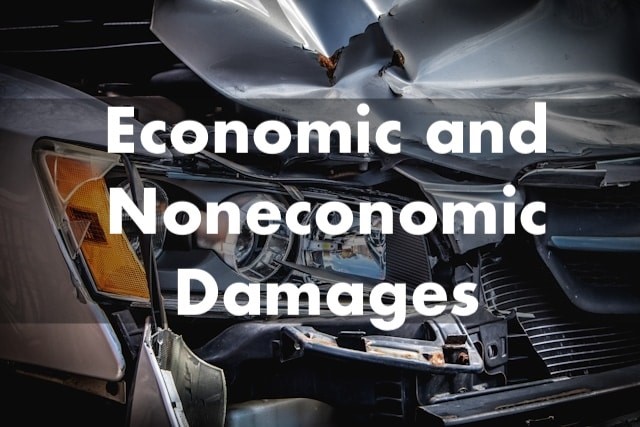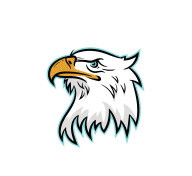Defending Your Rights, Protecting Your Freedom
Damages

Putting your life back together after a tragedy is difficult. Dealing with rising medical costs, loss of use of vehicle, the loss of income and mental suffering can put an unthinkable strain on already struggling families. Personal injury law covers a vast spectrum, encompassing everything from car accidents to defamation to toxic torts. As we’ve discussed, each “type of personal injury case” has unique characteristics, legal requirements, and potential outcomes. An understanding of these diverse cases can empower individuals to protect their rights and seek justice.
An essential aspect of personal injury cases is the types of damages. Damages can range from medical expenses and lost wages to pain and suffering or punitive damages. The nature and extent of these damages vary based on the circumstances of each case.
If you are injured in a personal injury incident and you are not at fault, you are entitled to financial compensation from the party at fault. Fortunately, Colorado law allows a person to recover both economic and non-economic damages.
ECONOMIC DAMAGES:
Economic damage refers to actual and measurable financial losses you have incurred or will incur in the future as a direct result of the at fault party’s conduct. This covers:
- Medical expenses, including hospital stays and doctors’ visits
- future medical expenses.
- loss of income.
- future loss of income
- loss of earning power.
- Burial/ funeral costs (wrongful death claim)
- Home health care
- Physical therapy and rehabilitation costs
- Property damage
- Loss of Inheritance (wrongful death claim)
Some of the most common injuries in a personal injury case include, but are not limited to:
-Bruising -Scars and Disfiguration -Facial injuries
-Neck injuries /Whiplash -Broken/fractured bones -Loss of Limbs
-Wrist & hand injuries -Brain injuries -Concussions
-Burns -Leg, knee & foot injuries -PTSD
-Back injuries -Paralysis -Internal bleeding
-Pain and distress -Spinal cord injuries -Road Rash
-Disfigurement -Amputation -Soft tissue
NON-ECONOMIC DAMAGES:
Some injuries sustained in a personal injury case are not always obvious. Non-economic damages are damages that are not immediately monetarily quantifiable. If a value is not negotiated during a settlement, the jury determines the value of non-economic damages at trial. These damages can include any of the following:
- Pain and suffering (mental)
- Emotional distress
- Loss of parental guidance
- Loss of companionship/consortium
- inconvenience
- scarring
- shock
- emotional distress
- grief and anguish
- humiliation
- insomnia
- depression
- anxiety
- physical impairment
- loss of enjoyment of life
This type of damage can be proven in various ways, including but not limited to:
- psychological treatment through a counselor, or religious leader;
- treatment for pain a person currently suffers or suffered after the accident;
- long-term disfigurement of the person’s body;
- loss of limb and the mental and physical effect of that loss;
- proof of inability to do things the person once loved (e.g., hobbies); or
- loss of enjoyment of companionship with loved ones (playing with children, sex with spouse, etc).
Compensation can only be awarded if a person endured the pain and suffering as the result of injuries stemming from an accident, which is the subject of your personal injury claim or lawsuit.
It is imperative you do not do this alone. Call the Best Personal Injury Attorney in Colorado to help you get the compensation you deserve. Call Beck Law.
Are there caps on pain and suffering damages in Colorado?
Yes. As of 2025, the damages for non-economic damages (which includes pain and suffering) is $1.5 million. Though if the case involves wrongful death, the cap is $2.125 million.
There are no caps in cases of permanent physical impairment. Also, in worker’s compensation claims, pain and suffering do not qualify as compensatory damages.
The jury is not made aware of the caps, but the judge will impose limits on whatever the jury awards, if they award higher than the cap.
Do I have to get mental health counseling to recover pain and suffering damages?
You are not required to get mental health counseling to recover these types of damages, but it may help. Mental health counseling can help establish, through expert testimony, that a person suffers from symptoms like insomnia, depression, anxiety or PTSD. Otherwise, you are asking a jury to rely only on your statements.
Can I make a claim for punitive damages?
Punitive damages are designed to punish at-fault parties for outrageous or egregious conduct and to deter others from committing the same conduct. Punitive damages are not based upon the losses a person suffered. Instead, they serve to:
Punitive damages can be awarded when an injured person proves that the harm occurred as the direct result of:
- fraud
- malice, or
- willful or wanton conduct.
The court is allowed to exceed the actual damages by up to 3 times the actual damages amount if it finds:
- the defendant has continued the behavior or repeated the action in a willful and wanton manner, either against the plaintiff or another person or persons, during the time the case is occurring; or
- the defendant has acted in a willful and wanton manner during the pendency of the action in a manner that has further aggravated the damages of the plaintiff when the defendant knew or should have known such action would produce aggravation.
The court and jury can consider various evidence of the wrongdoer’s conduct, such as:
- the cause of the accident;
- purposeful acts by the defendant;
- whether a person was intoxicated;
- whether a person was committing a separate crime;
- personal history between the parties (especially to prove malice); and
- what the defendant knew about what his or her actions may cause.
What is comparative Negligence?
If a plaintiff pursues a personal injury claim, the defendant can argue comparative negligence as a partial defense to liability. To prove comparative negligence, the defendant would need to demonstrate:
- You had an obligation to take action to avoid being harmed
- You failed to take the actions a reasonably prudent person would have taken under the circumstances
- This negligent failure on your part was partly or fully responsible for causing the injuries that gave rise to the lawsuit
With a 50% threshold rule, you cannot collect if you’re 50% or more responsible. If your fault is equal to or greater than the other driver, you’re out of luck if you want to file a claim against the other driver’s insurance company.
Under the legal doctrine of comparative negligence, a victim who was partly responsible for the incident that led to harm can only recover part of their damages. And, in some cases, they cannot recover at all depending on how much of the blame lies with them.
It’s helpful to look at an example to understand how this works. If a jury awarded you $100,000 in damages and found the defendant was 80% responsible (and you were 20% responsible), you could pursue a claim and recover $80,000 (80% of the $100,000 in damages).
How Much Compensation Is Typical in Personal Injury Cases?
Compensation in personal injury cases is based on the facts of each case. Compensation is based on the amount of damages caused, or at least it’s supposed to be. This makes it difficult to estimate a typical amount of compensation even for cases of the same type.
A car accident involving a broken arm is going to be different than a car accident causing a severed hand.
See: Bureau of Justice Statistics in 2005
Still, the study mentioned above does shed some insight:
- Half of all plaintiffs received $24,000 or less.
- The median award was $31,000 for all cases studied.
- The median amount awarded in auto accident cases was $16,000.
- The median award in premises liability cases — cases holding owners or landlords liable for injuries sustained due to the condition of the property — was $90,000.
- The average award for medical malpractice cases was $679,000.
- The median payout for product liability cases — cases involving flawed products like medicine with unknown side effects or a lawn mower that explodes whenever it gets hot — was $748,000.
